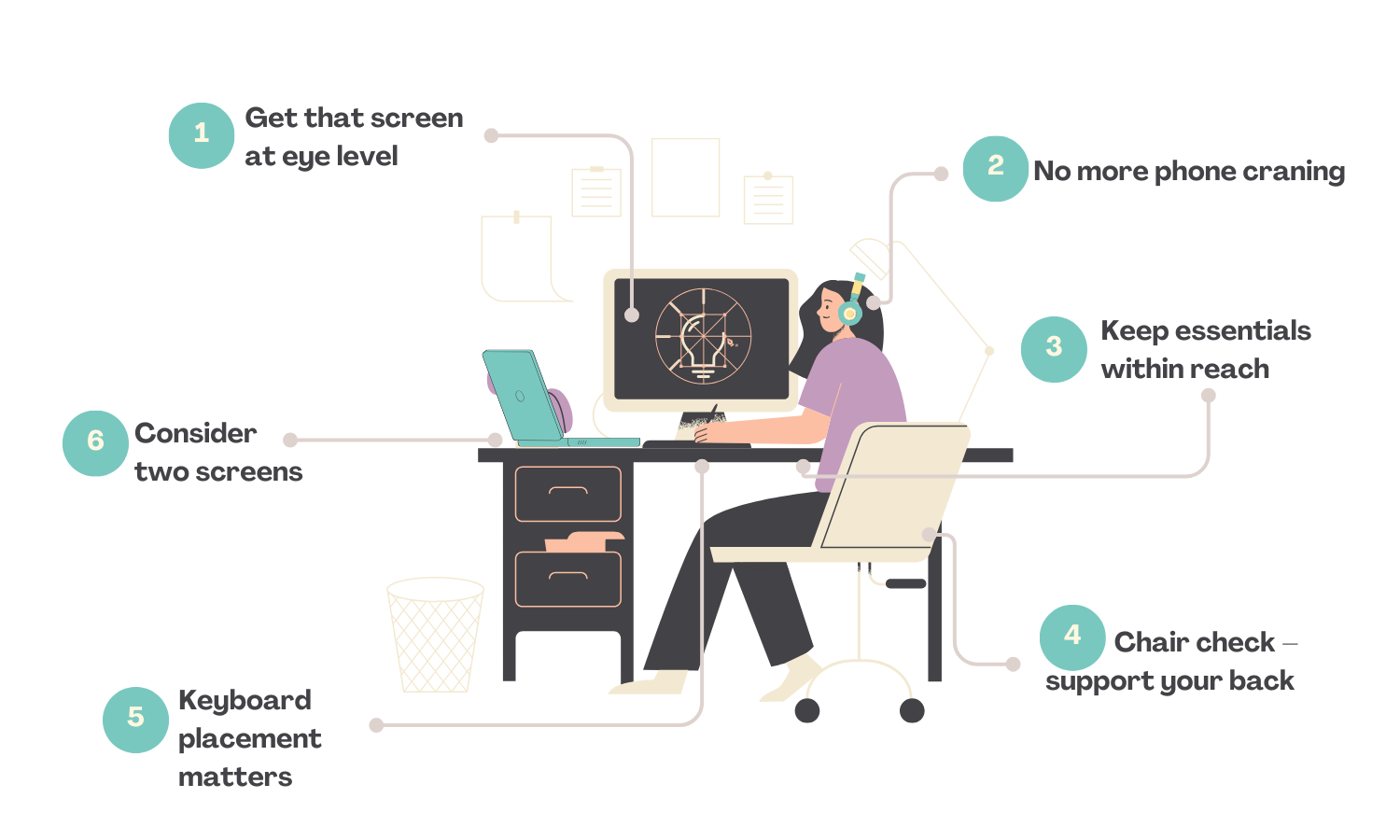How to keep your back and neck happy while working from home
So, you're working from home now, huh? No more commute, no more office dress code, but... no more office ergonomics either. If your back and neck are feeling the strain, you’re definitely not alone. The comfort of home can trick us into working from the couch or bed, but your back and neck aren’t too thrilled about it. Trust me, they’ll start to protest.
With a few simple tweaks to your setup and habits, you can keep those aches at bay and work comfortably. Let’s dive into how you can create a back-and-neck-friendly workspace that won’t leave you hunched over and sore by the end of the day.
Impact of back problems
Back issues are a big deal in Australia, ranking as the third leading cause of disease burden in 2023. They account for a significant chunk—4.3%—of the country’s total disease burden.
To put things in perspective, in 2020–21, Australians spent around $3.4 billion on treating and managing back problems. That’s about 2.2% of the entire health system's expenditure and 23% of what we spend on all musculoskeletal conditions.
In 2022, back problems contributed to 1,112 deaths, or 4.3 deaths per 100,000 people, making up about 0.6% of all deaths in the country.
Source: Australian Institute of Health and Welfare
Making your home office setup work for you
“Poor posture at work can result in back pain, discomfort of the head, neck, shoulder, arm, hand, wrist, leg and foot, circulation problems and headaches.”
Your work environment plays a huge role in keeping back and neck pain at bay. Here’s how to get it right:
1. Get that screen at eye level
If you stretch your arm out, you should be able to touch your screen with your fingertips. This helps ensure your screen isn’t too close or too far away. Adjust the top of the screen to be at, or slightly below, eye level to avoid straining your neck.
2. No more phone craning
Spending lots of time on the phone? Ditch cradling the phone between your ear and shoulder. Instead, opt for a headset or go hands-free to keep your neck muscles happy.
3. Keep essentials within reach
Make sure the items you use most often, like your phone, mouse, or calculator, are within arm’s reach. This avoids the need to twist or stretch, which could strain your back.
4. Chair check – support your back
Your chair should let you use the keyboard with your wrists and forearms straight and level with the floor. Crossed legs might feel comfy at first, but they can lead to posture problems over time.
5. Keyboard placement matters
Place your keyboard a few inches from the edge of your desk. Keep your arms bent in an L-shape and elbows close to your sides to reduce strain while typing.
6. Consider two screens
If your job requires lots of screen time, consider setting up dual screens. Position your main screen directly in front of you to avoid repetitive neck twisting.
Quick tips to keep your posture in check
Posture isn’t just about how you sit – it’s about how often you move. Here are some quick tips:
Don’t slouch – Over time, slouching can cause pain. Use a chair with good support and check your posture throughout the day.
Stand up often – Take breaks. Stand up at least once every hour and change your position when possible.
Avoid ‘text neck’ – Constantly looking down at your phone or keyboard can cause neck stiffness. Hold your phone up to eye level and keep your screen at a comfortable height.
Back and neck pain shouldn’t be the price you pay for working from home. By adjusting your workspace and staying mindful of your posture, you can keep those aches at bay. Remember, taking care of your body now means fewer problems down the line. So, make those changes today – your back and neck will thank you later!
References:
Australian Institute of Health and Welfare. Australia's Health 2016. Canberra: AIHW, 2016
Comcare Australia - Officewise: A guide to Health and Safety in the Office






